Special Report
25 Colleges That Reported Spikes in COVID Cases After Reopening
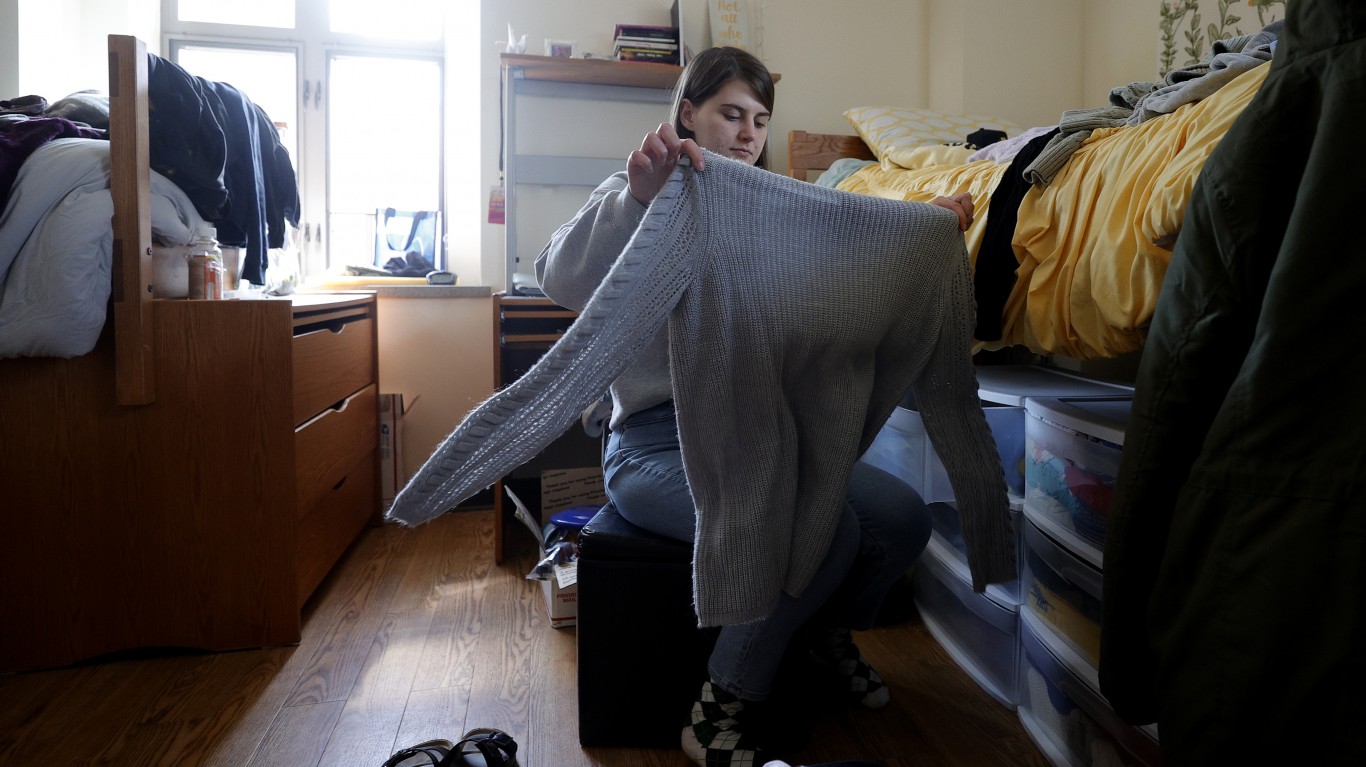
Published:
Last Updated:

Over the past month, many colleges and universities have reopened for the fall semester. While some are only offering classes online amid the COVID-19 pandemic, others are going ahead with in-person education. Though all of these institutions are taking some precautions, like mask mandates and social distancing, thousands of students have still contracted the virus since classes began in August.
To find the colleges that reopened and experienced a spike in COVID-19 cases, 24/7 Wall St. reviewed university dashboards at colleges in all 50 states to gather data. We also reviewed college case tracking stories from The New York Times, Forbes, USA Today, and the Inside Higher Ed website to compile our list. Cumulative COVID-19 cases per 100,000 as of Sept. 13 in the state, metro area, or county in which the school is located came from state and local health authorities.
There are dozens of colleges that have reported that hundreds of their students have tested positive for COVID-19 since being allowed back on campus. A handful have confirmed well over 1,000 cases.
While parties and other social gatherings — in defiance of safety regulations — have certainly contributed to the spread of the virus, health experts also pointed out that college students often work essential jobs, such as at grocery stores or restaurants. They recommend a robust testing strategy, in which everyone on campus is tested multiple times per week.
Some students are also at higher risk of contracting the virus simply because of where they go to school. All of the schools with over 1,000 cases are either in the South or Midwest, regions where COVID-19 cases are more common than in other parts of the country. From Sept. 7-13, the U.S. averaged 10.9 daily new COVID-19 cases per 100,000 residents. Over the same period, 15 states reported more than 15 average daily new cases per 100,000 residents during that week — all of them are either in the South or Midwest. These are the states where COVID-19 is growing the fastest right now.
Younger students in grade school are also returning to classes. Like colleges, school districts are also deciding whether to offer in-person or remote learning options for their students. State education agencies typically issue some sort of guidance for these districts on how to reopen if they choose to do so. This is how schools are managing COVID-19 in every state.
Click here to see the colleges that reopened and saw a spike in COVID cases

Georgia College
> Location: Milledgeville, Georgia
> Confirmed COVID-19 cases among students: 649 as of Sept. 13
> Reopened for in-person classes on: Aug. 12
> COVID-19 cases in Baldwin County: 4,222 per 100,000 as of Sept. 13
> COVID-19 cases in Georgia: 2,798 per 100,000 as of Sept. 13
Students and staff members at the Milledgeville-based school held a “die-in” demonstration at the campus on Aug. 28 to emphasize the risk of in-person teaching as COVID-19 numbers rose at the liberal arts college. The teachers union demanded online learning options, hazard pay, more testing, and job security.
[in-text-ad]

University of Kansas
> Location: Lawrence, Kansas
> Confirmed COVID-19 cases among students: 686 as of Sept. 6
> Reopened for in-person classes on: Aug. 24
> COVID-19 cases in Lawrence metro area: 1,389 per 100,000 as of Sept. 13
> COVID-19 cases in Kansas: 1,662 per 100,000 as of Sept. 13
A University of Kansas professor tweeted a video on Sept. 12 that showed a house party with students in Lawrence, Kansas, with few people social distancing or wearing masks.
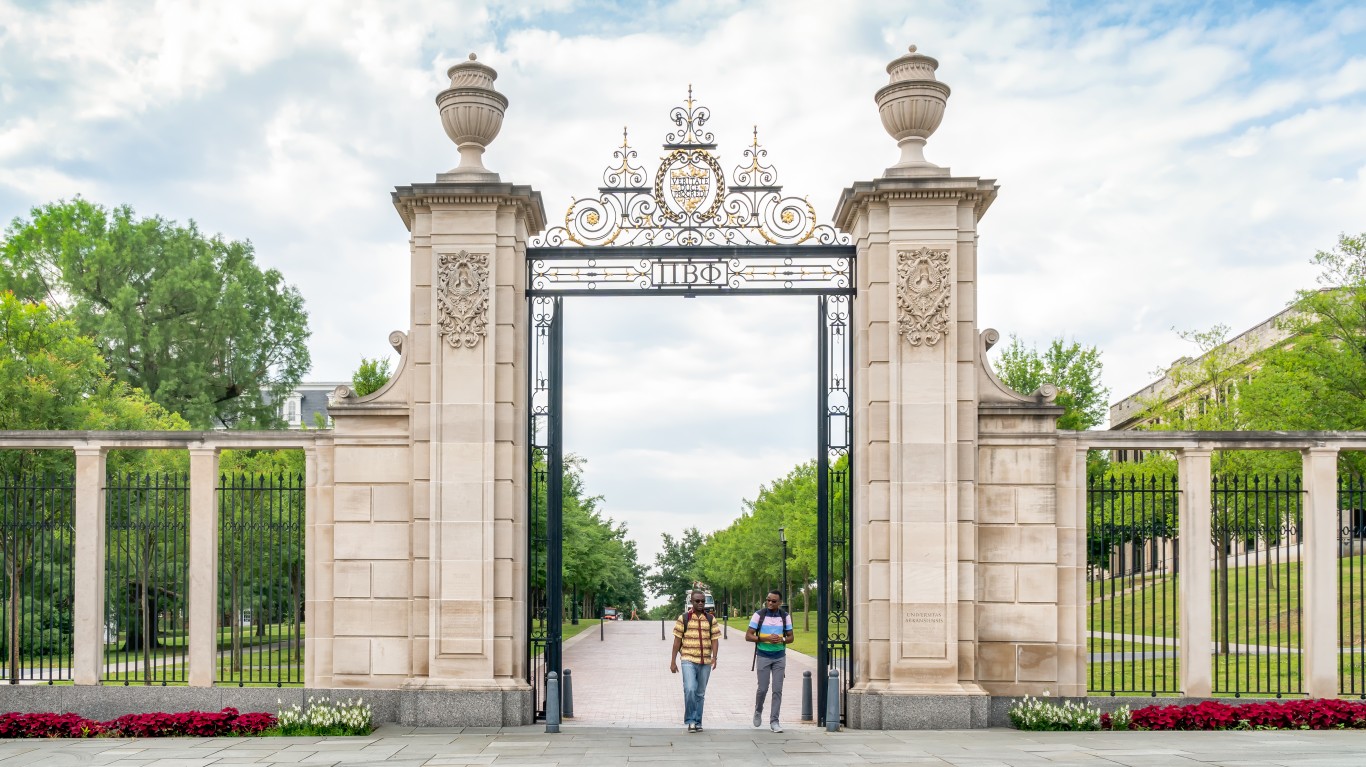
University of Arkansas
> Location: Fayetteville, Arkansas
> Confirmed COVID-19 cases among students: 712 as of Sept. 11
> Reopened for in-person classes on: Aug. 24
> COVID-19 cases in Fayetteville-Springdale-Rogers metro area: 2,780 per 100,000 as of Sept. 13
> COVID-19 cases in Arkansas: 2,313 per 100,000 as of Sept. 13
The university announced on Sept. 4 that it was canceling on-campus events from Sept. 5-18 because of a surge in COVID-19 cases.
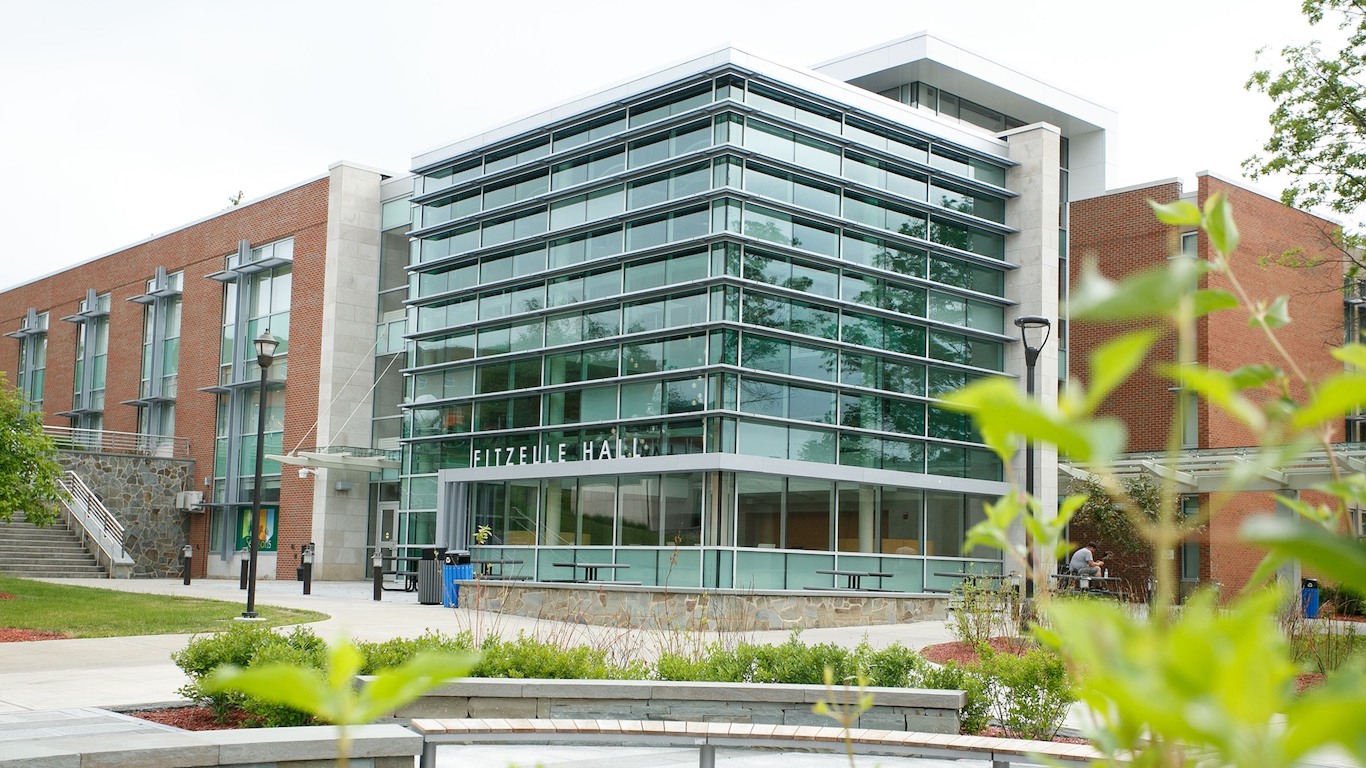
State University of New York-Oneonta
> Location: Oneonta, New York
> Confirmed COVID-19 cases among students: 723 as of Sept. 13
> Reopened for in-person classes on: Aug. 24
> COVID-19 cases in Otsego County: 521 per 100,000 as of Sept. 13
> COVID-19 cases in New York: 2,274 per 100,000 as of Sept. 13
On Sept. 3, officials at The State University of New York at Oneonta said they were canceling in-person classes for the fall semester and sending students home because of a COVID-19 outbreak. In late August, less than a week after the start of classes, the school suspended five students who, according to officials, had organized parties that might have led to a spike in COVID-19 cases on campus.
[in-text-ad-2]
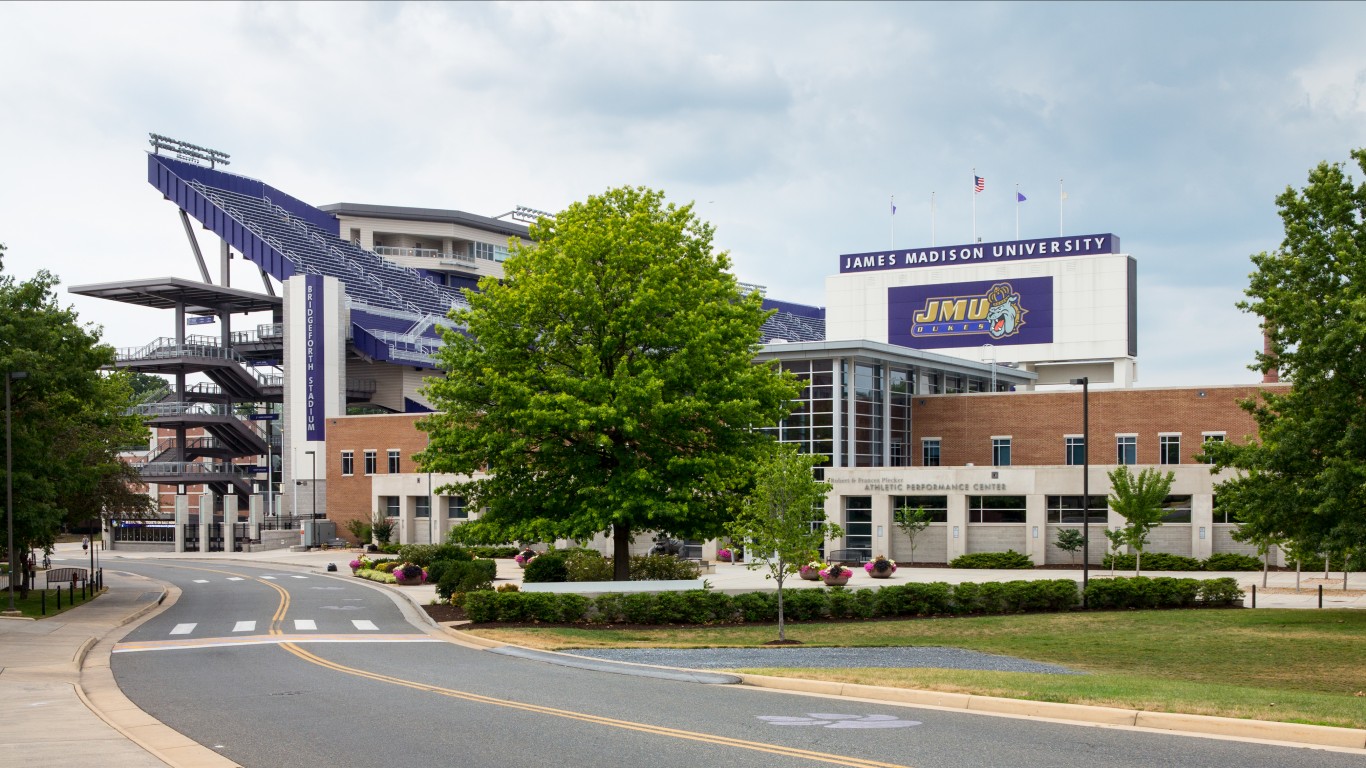
James Madison University
> Location: Harrisonburg, Virginia
> Confirmed COVID-19 cases among students: 739 as of Sept. 11
> Reopened for in-person classes on: Aug. 26
> COVID-19 cases in Harrisonburg metro area: 2,567 per 100,000 as of Sept. 13
> COVID-19 cases in Virginia: 1,571 per 100,000 as of Sept. 13
James Madison University in Harrisonburg, Virginia, has begun 146 disciplinary cases against students alleged to have violated the COVID-19 student agreement all students were required to sign before classes began.

Louisiana State University
> Location: Baton Rouge, Louisiana
> Confirmed COVID-19 cases among students: 754 as of Sept. 13
> Reopened for in-person classes on: Aug. 24
> COVID-19 cases in Baton Rouge metro area: 3,335 per 100,000 as of Sept. 13
> COVID-19 cases in Louisiana: 3,379 per 100,000 as of Sept. 13
LSU has reported a total of 754 positive cases of COVID-19 as of Sept. 13. The school’s head football coach Ed Orgeron estimated that “most” of his team had contracted the virus.
[in-text-ad]
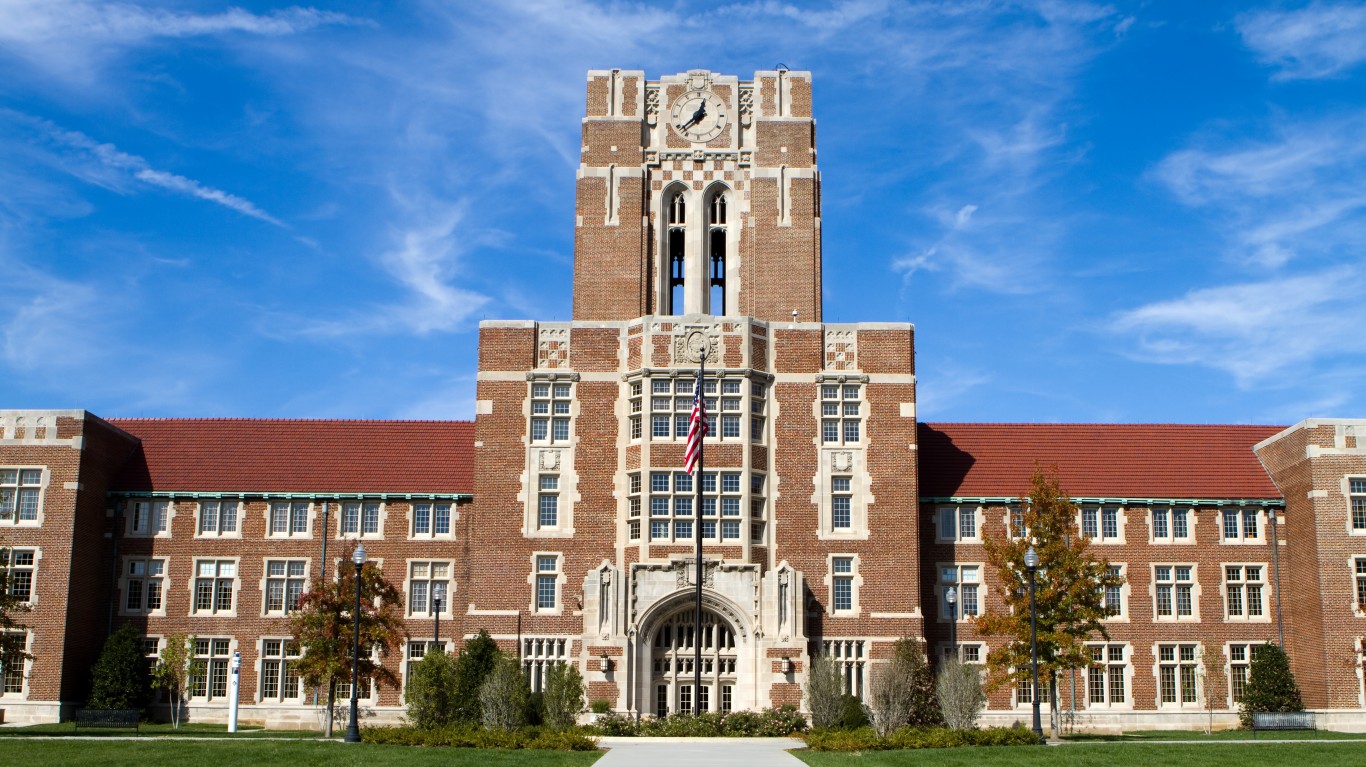
University of Tennessee
> Location: Knoxville, Tennessee
> Confirmed COVID-19 cases among students: 768 as of Sept. 13
> Reopened for in-person classes on: Aug. 19
> COVID-19 cases in Knoxville metro area: 1,658 per 100,000 as of Sept. 13
> COVID-19 cases in Tennessee: 2,524 per 100,000 as of Sept. 13
More than 2,000 people at the Knoxville, Tennessee, school were in quarantine or self-isolation, according to Chancellor Donde Plowman on Sept. 8. Plowman said the university had received reports of fraternities flouting guidance on social distancing and renting spaces off campus for parties.
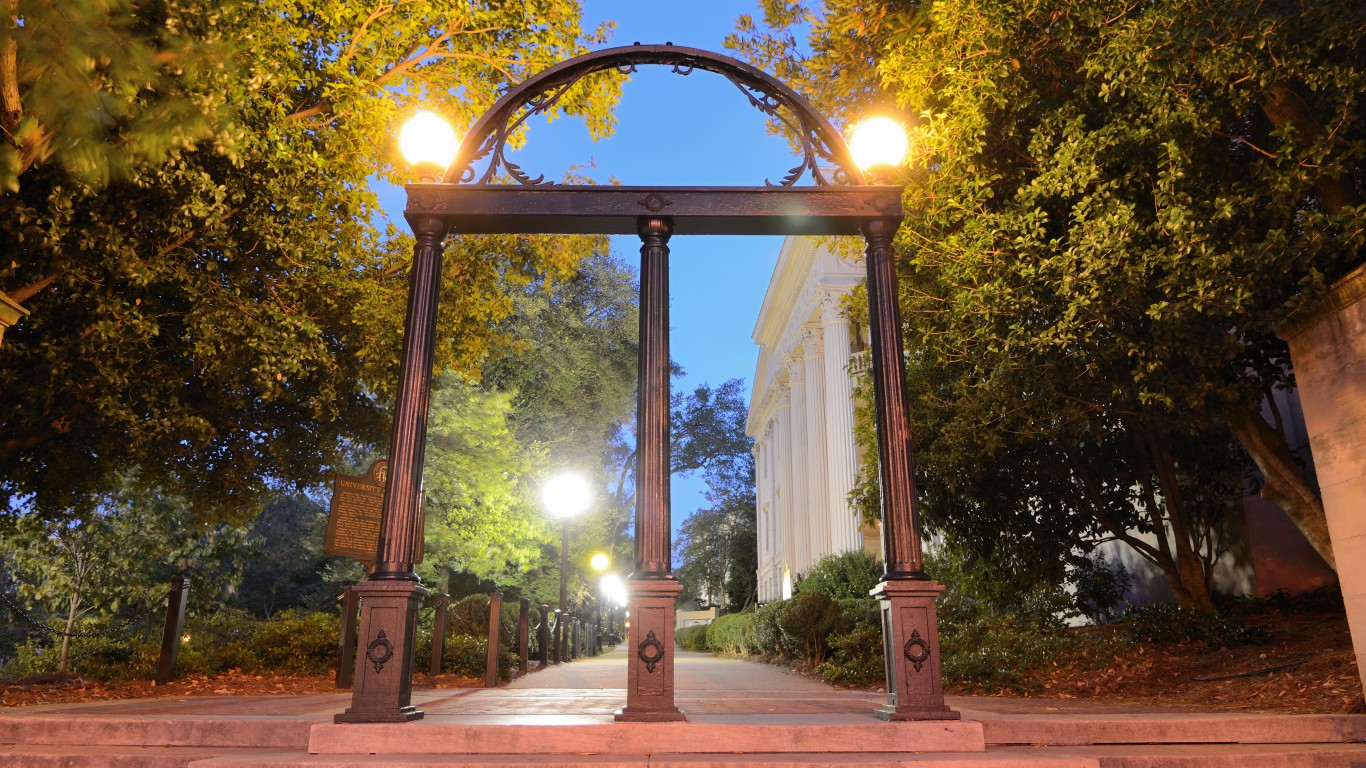
University of Georgia
> Location: Athens, Georgia
> Confirmed COVID-19 cases among students: 798 as of Aug. 30
> Reopened for in-person classes on: Aug. 20
> COVID-19 cases in Athens-Clarke County metro area: 2,961 per 100,000 as of Sept. 13
> COVID-19 cases in Georgia: 2,798 per 100,000 as of Sept. 13
The University of Georgia on Sept. 15 suspended a fraternity on campus and launched an investigation into two other student groups over violations of social distancing and other university conduct rules.
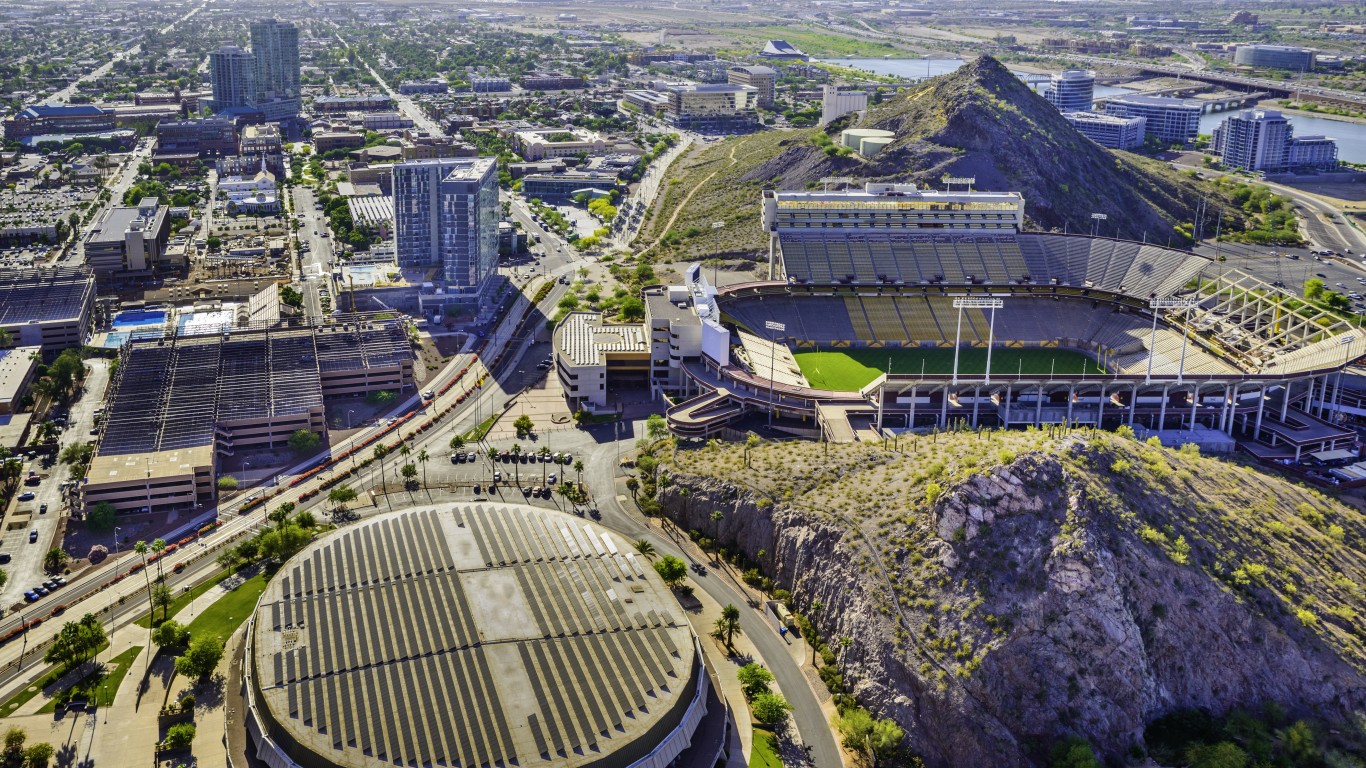
Arizona State University
> Location: Tempe, Arizona
> Confirmed COVID-19 cases among students: 803 as of Aug. 31
> Reopened for in-person classes on: Aug. 20
> COVID-19 cases in Phoenix-Mesa-Chandler metro area: 3,160 per 100,000 as of Sept. 13
> COVID-19 cases in Arizona: 2,907 per 100,000 as of Sept. 13
The university said on Aug. 31 that it had 803 known cases of COVID-19 among its students and staff. Almost 75,000 students attend ASU, whose main campus is in Tempe.
[in-text-ad-2]
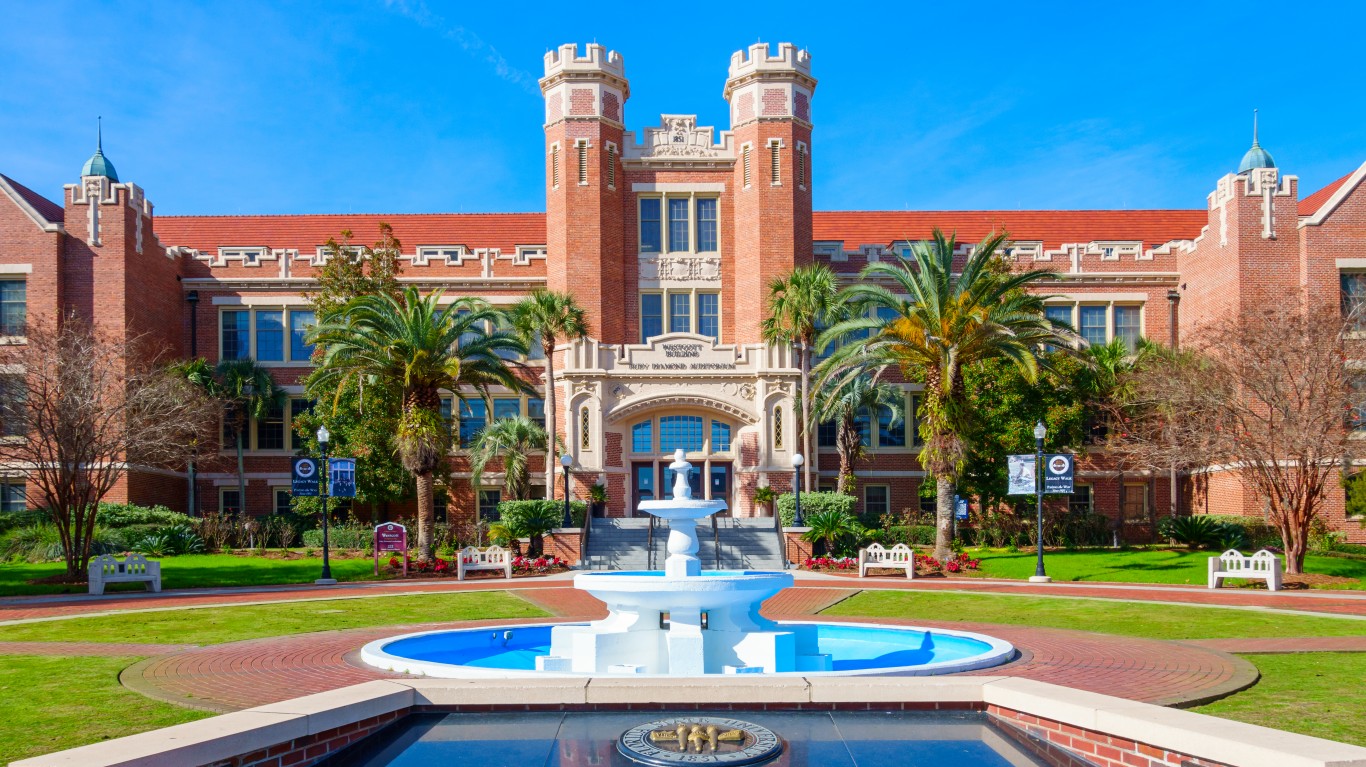
Florida State University
> Location: Tallahassee, Florida
> Confirmed COVID-19 cases among students: 902 as of Sept. 11
> Reopened for in-person classes on: Aug. 24
> COVID-19 cases in Tallahassee metro area: 3,462 per 100,000 as of Sept. 13
> COVID-19 cases in Florida: 3,117 per 100,000 as of Sept. 13
In an attempt to slow the spread of the coronavirus, Florida State University launched a random testing program for asymptomatic students, faculty, and staff who are on campus during the fall semester. The program began on Sept. 14. FSU’s goal is to test at least 5%-10% of those on campus daily.

University of North Carolina
> Location: Chapel Hill, North Carolina
> Confirmed COVID-19 cases among students: 953 as of Sept. 10
> Reopened for in-person classes on: Aug. 10
> COVID-19 cases in Durham-Chapel Hill metro area: 2,173 per 100,000 as of Sept. 13
> COVID-19 cases in North Carolina: 1,781 per 100,000 as of Sept. 13
The University of North Carolina shifted to remote learning on Aug. 17 following a surge of COVID-19 cases after the start of the fall semester on Aug. 10. The announcement was made one week after 5,800 students moved into dorms at the Chapel Hill campus.
[in-text-ad]
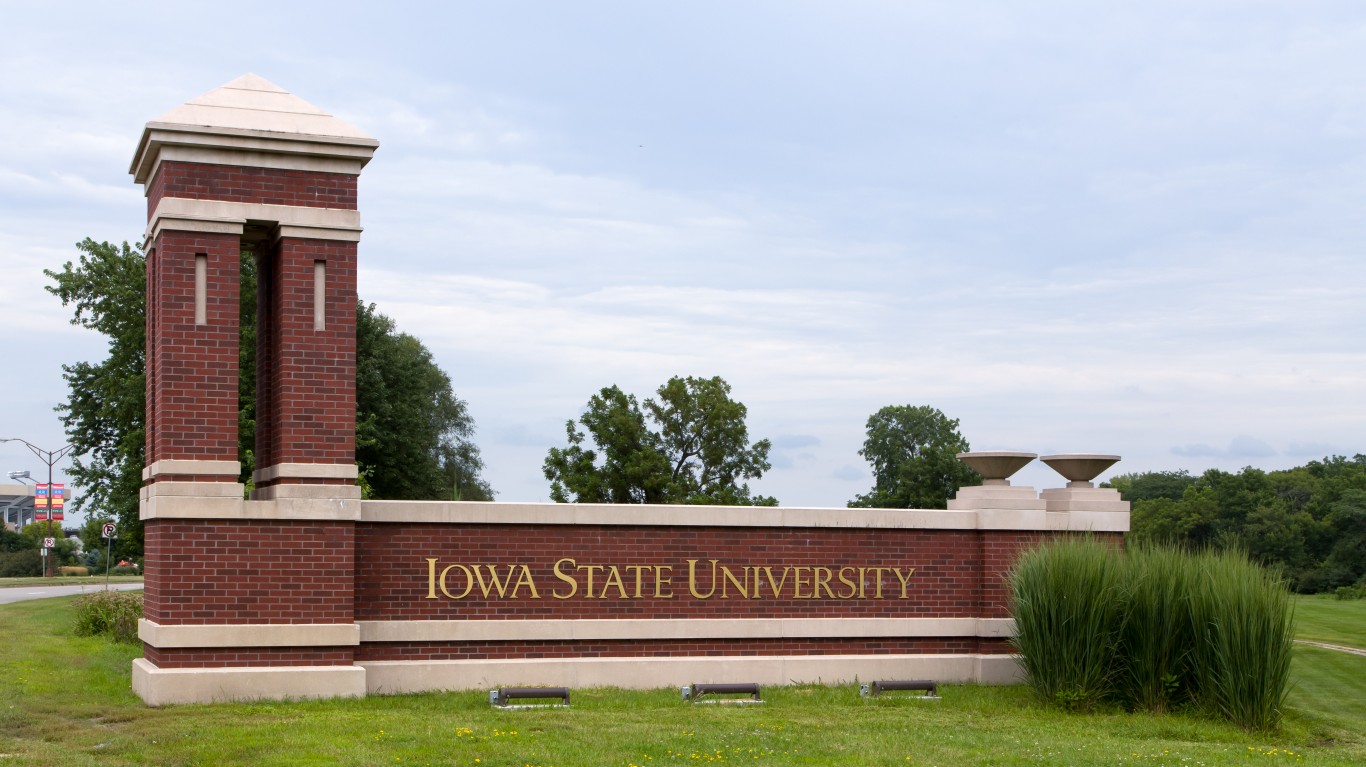
Iowa State University
> Location: Ames, Iowa
> Confirmed COVID-19 cases among students: 976 as of Sept. 14
> Reopened for in-person classes on: Aug. 17
> COVID-19 cases in Ames metro area: 2,857 per 100,000 as of Sept. 13
> COVID-19 cases in Iowa: 2,356 per 100,000 as of Sept. 13
Following a spike in COVID-19 cases, Iowa State University reversed its decision and did not allow spectators to attend its season-opening football game Sept. 12 against Louisiana-Lafayette. The university said attendance at future games this season depends on whether there is an uptick in COVID-19 cases.

University of Kentucky
> Location: Lexington, Kentucky
> Confirmed COVID-19 cases among students: 983 as of Sept. 14
> Reopened for in-person classes on: Aug. 17
> COVID-19 cases in Lexington-Fayette metro area: 1,349 per 100,000 as of Sept. 13
> COVID-19 cases in Kentucky: 1,263 per 100,000 as of Sept. 13
Lexington Police have issued citations to students for throwing off-campus parties, a violation of the University of Kentucky’s safety guidelines. The school shut down training for its swimming and diving program due to a high number of COVID-19 cases.
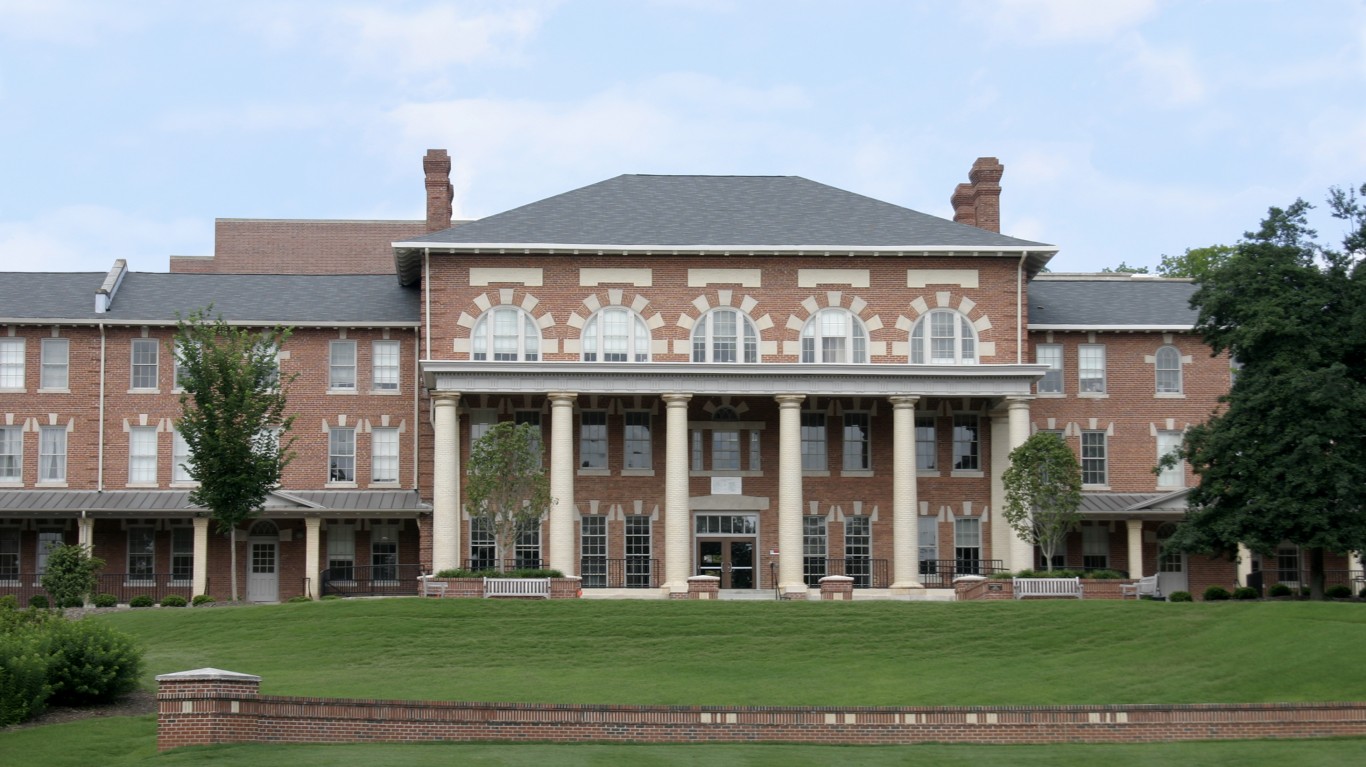
North Carolina State University
> Location: Raleigh, North Carolina
> Confirmed COVID-19 cases among students: 997 as of Sept. 10
> Reopened for in-person classes on: Aug. 10
> COVID-19 cases in Raleigh-Cary metro area: 1,656 per 100,000 as of Sept. 13
> COVID-19 cases in North Carolina: 1,781 per 100,000 as of Sept. 13
On Aug. 20, North Carolina State University moved to online classes and shuttered dorms following surges in COVID-19 cases at the Raleigh-based school. Clusters of outbreaks have occurred in residence halls, off-campus apartments, and fraternity and sorority houses.
[in-text-ad-2]
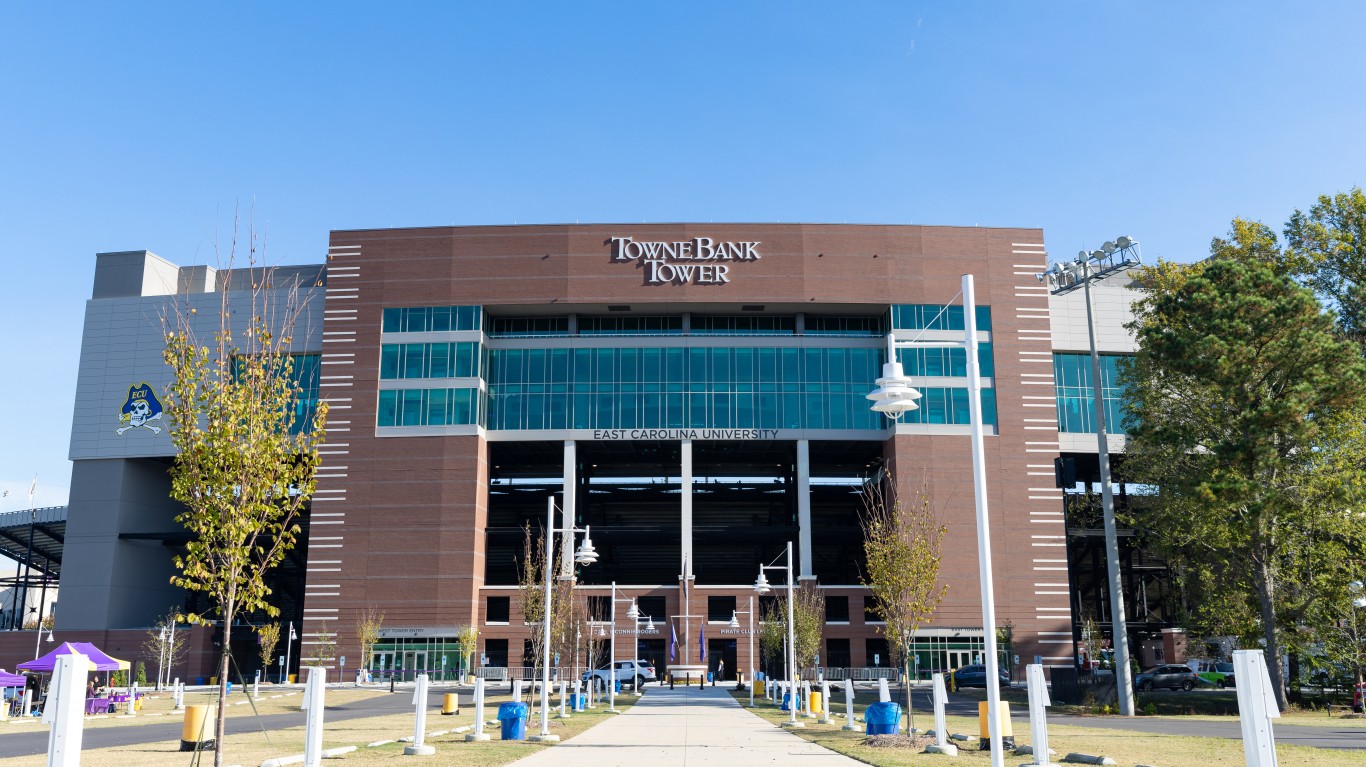
East Carolina University
> Location: Greenville, North Carolina
> Confirmed COVID-19 cases among students: 1,034 as of Sept. 10
> Reopened for in-person classes on: Aug. 10
> COVID-19 cases in Greenville metro area: 2,421 per 100,000 as of Sept. 13
> COVID-19 cases in North Carolina: 1,781 per 100,000 as of Sept. 13
Two weeks after the semester started on Aug. 10, the Greenville, North Carolina, school shifted to online instruction and asked students to move out of dorms.
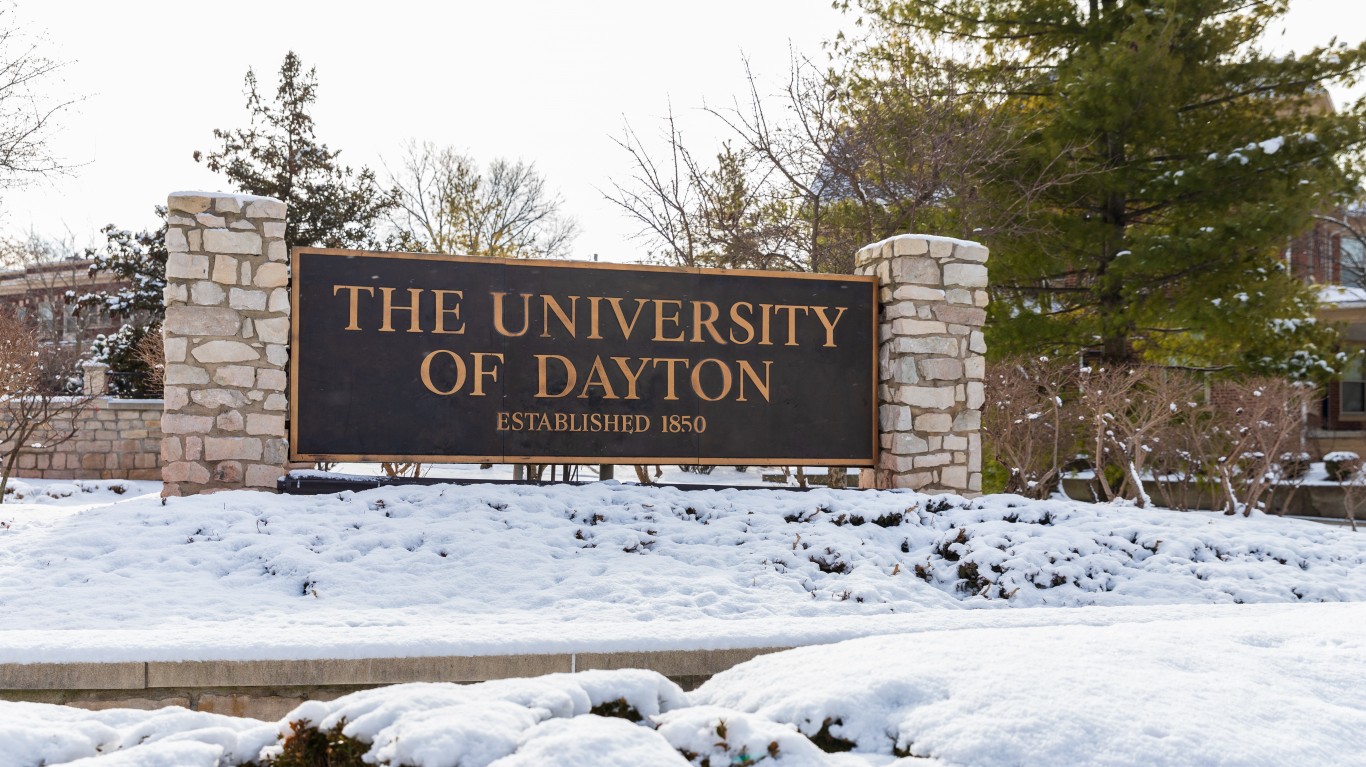
University of Dayton
> Location: Dayton, Ohio
> Confirmed COVID-19 cases among students: 1,211 as of Sept. 13
> Reopened for in-person classes on: Aug. 24
> COVID-19 cases in Dayton-Kettering metro area: 1,190 per 100,000 as of Sept. 13
> COVID-19 cases in Ohio: 1,175 per 100,000 as of Sept. 13
As the number of COVID-19 cases rose at the University of Dayton, the college shifted to remote learning for its first week of classes Aug. 24-28, then extended online classes to Sept. 14. President Eric Spina said the school launched a testing and tracing program after an outbreak was reported in student housing and on the outskirts of the campus in late August.
[in-text-ad]

Miami University
> Location: Oxford, Ohio
> Confirmed COVID-19 cases among students: 1,243 as of Sept. 11
> Reopened for in-person classes on: Aug. 17
> COVID-19 cases in Butler county: 1,392 per 100,000 as of Sept. 13
> COVID-19 cases in Ohio: 1,175 per 100,000 as of Sept. 13
Miami University decided over the summer to start remote learning for the first month of the year. The school plans to hold in-person and hybrid classes starting Sept. 21, even though the Ohio college has reported more than 1,200 cases among students.
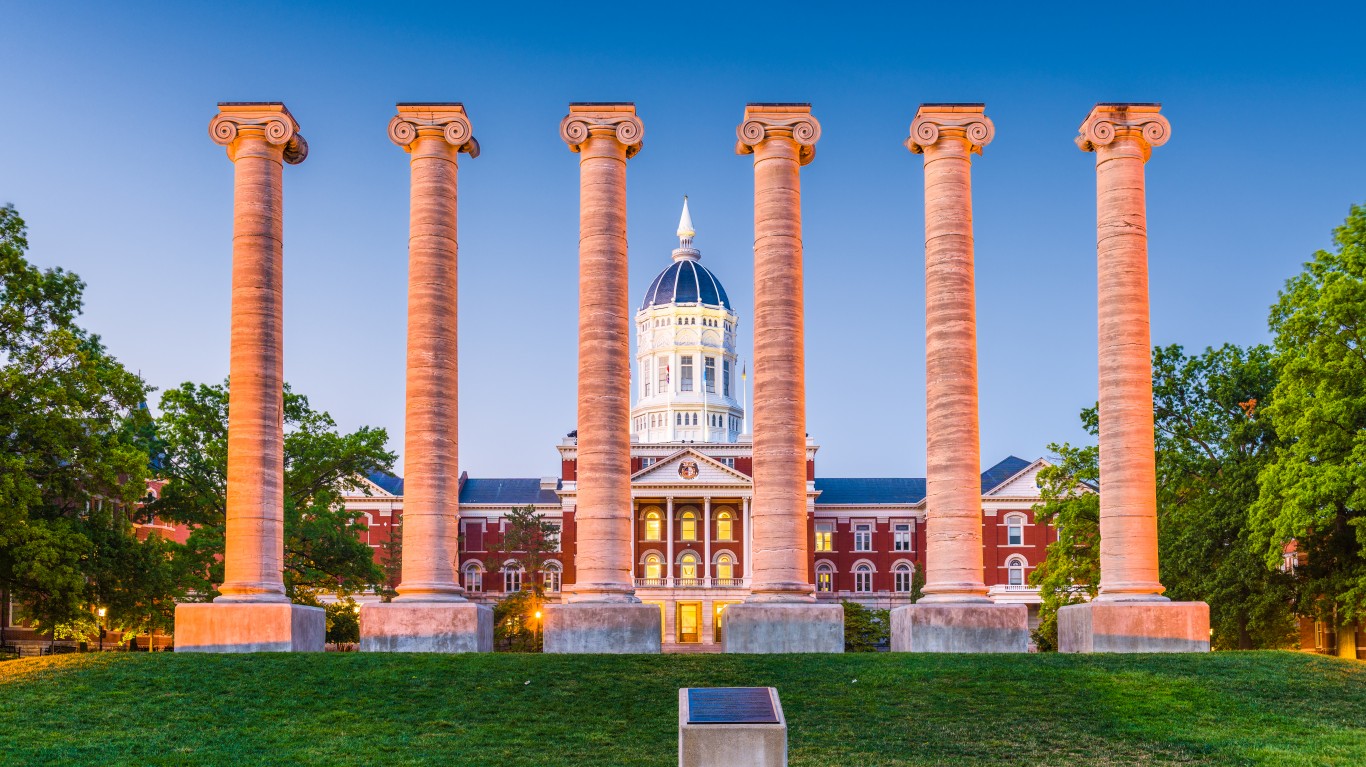
University of Missouri
> Location: Columbia, Missouri
> Confirmed COVID-19 cases among students: 1,314 as of Sept. 14
> Reopened for in-person classes on: Aug. 24
> COVID-19 cases in Columbia metro area: 2,230 per 100,000 as of Sept. 13
> COVID-19 cases in Missouri: 1,676 per 100,000 as of Sept. 13
The University of Missouri reported a cumulative total of 1,314 cases since the university began receiving data from the public health department on Aug. 19 (about a week after student move-in) and as of Sept. 14.

Indiana University
> Location: Bloomington, Indiana
> Confirmed COVID-19 cases among students: 1,370 as of Sept. 11
> Reopened for in-person classes on: Aug. 24
> COVID-19 cases in Bloomington metro area: 1,291 per 100,000 as of Sept. 13
> COVID-19 cases in Indiana: 1,581 per 100,000 as of Sept. 13
The health department in Monroe County, Indiana, quarantined 30 Indiana University fraternity and sorority houses, prompting the university to publicly recommend that members shut them down and move elsewhere.
[in-text-ad-2]
Illinois State University
> Location: Normal, Illinois
> Confirmed COVID-19 cases among students: 1,383 as of Sept. 14
> Reopened for in-person classes on: Aug. 17
> COVID-19 cases in Bloomington-Normal metro area: 1,679 per 100,000 as of Sept. 13
> COVID-19 cases in Illinois: 2,051 per 100,000 as of Sept. 13
More than 1,300 people have contracted the virus at Illinois State University, including 65 in the last seven-day period ending Sept. 14.

University of Iowa
> Location: Iowa City, Iowa
> Confirmed COVID-19 cases among students: 1,804 as of Sept. 11
> Reopened for in-person classes on: Aug. 24
> COVID-19 cases in Iowa City metro area: 3,064 per 100,000 as of Sept. 13
> COVID-19 cases in Iowa: 2,356 per 100,000 as of Sept. 13
Because of the COVID-19 pandemic, the University of Iowa announced it will cancel its 2021 spring break, as its spring semester will begin on Jan. 25, a week later than it was initially supposed to.
[in-text-ad]
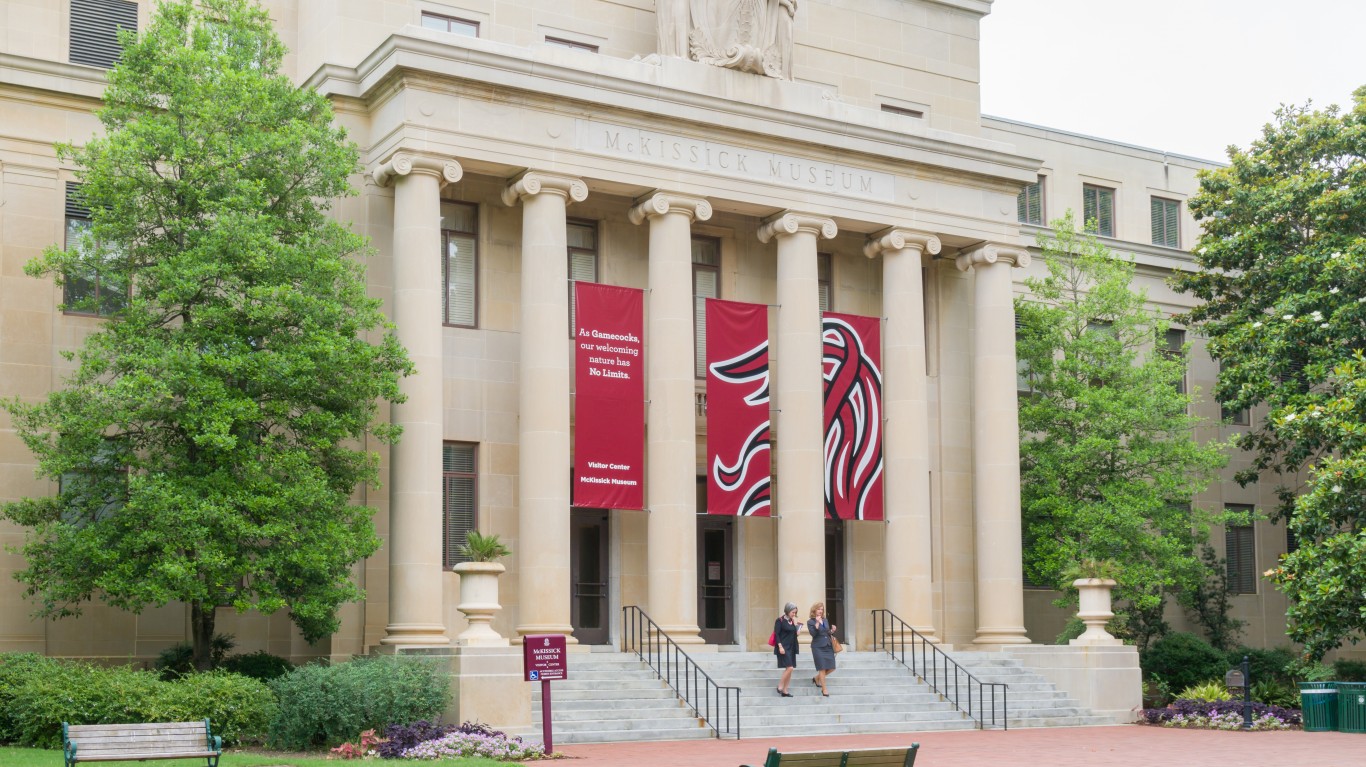
University of South Carolina
> Location: Columbia, South Carolina
> Confirmed COVID-19 cases among students: 2,074 as of Sept. 10
> Reopened for in-person classes on: Aug. 20
> COVID-19 cases in Columbia metro area: 2,890 per 100,000 as of Sept. 13
> COVID-19 cases in South Carolina: 2,594 per 100,000 as of Sept. 13
Bob Caslen, president of the University of South Carolina, has ordered the development of a plan to shut down the campus after the number of total cases of COVID-19 doubled in a day, to 380, on Aug. 28. By now, the university reported over 2,000 cases.

University of Alabama
> Location: Tuscaloosa, Alabama
> Confirmed COVID-19 cases among students: 2,184 as of Sept. 10
> Reopened for in-person classes on: Aug. 19
> COVID-19 cases in Tuscaloosa metro area: 2,790 per 100,000 as of Sept. 13
> COVID-19 cases in Alabama: 2,839 per 100,000 as of Sept. 13
The University of Alabama reported over 2,100 cases of COVID-19 among its student population in the last month, including 481 from Aug. 25-27 and 846 from Aug. 28-Sept. 3.

Ohio State University
> Location: Columbus, Ohio
> Confirmed COVID-19 cases among students: 2,209 as of Sept. 11
> Reopened for in-person classes on: Aug. 25
> COVID-19 cases in Columbus metro area: 1,689 per 100,000 as of Sept. 13
> COVID-19 cases in Ohio: 1,175 per 100,000 as of Sept. 13
Ohio State University canceled its 2021 spring break over travel concerns related to the coronavirus. Though the football season was postponed in August, Ohio State and the rest of the Big Ten Conference will begin the football season Oct. 24.
[in-text-ad-2]

Texas A&M University
> Location: College Station, Texas
> Confirmed COVID-19 cases among students: 2,846 as of Sept. 11
> Reopened for in-person classes on: Aug. 19
> COVID-19 cases in College Station-Bryan metro area: 2,456 per 100,000 as of Sept. 13
> COVID-19 cases in Texas: 2,298 per 100,000 as of Sept. 13
At least three different student organizations — two sororities and a Corps of Cadets squadron — at Texas A&M have been identified as COVID-19 clusters. As of Sept. 12, more than 10% of COVID-19 tests processed by Texas A&M University Student Health Services came back positive.
Are you ahead, or behind on retirement? For families with more than $500,000 saved for retirement, finding a financial advisor who puts your interest first can be the difference, and today it’s easier than ever. SmartAsset’s free tool matches you with up to three fiduciary financial advisors who serve your area in minutes. Each advisor has been carefully vetted and must act in your best interests. Start your search now.
If you’ve saved and built a substantial nest egg for you and your family, don’t delay; get started right here and help your retirement dreams become a retirement reality.
Thank you for reading! Have some feedback for us?
Contact the 24/7 Wall St. editorial team.